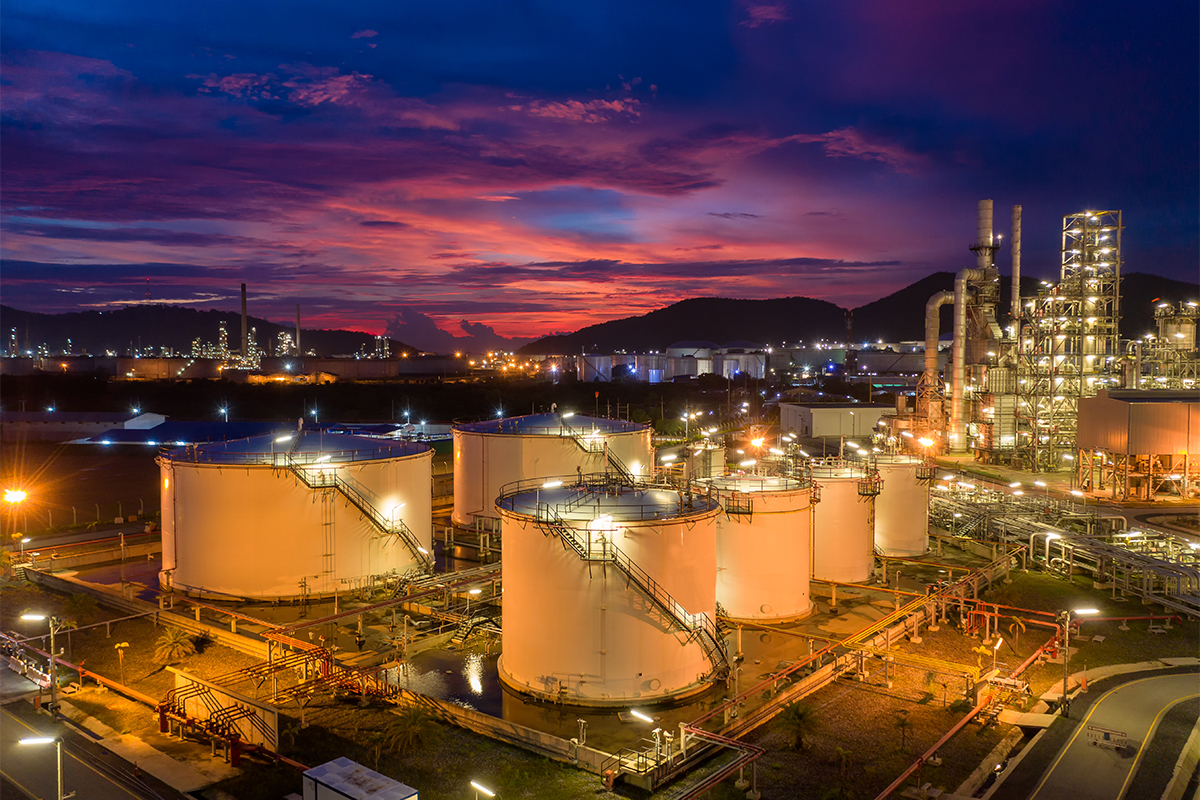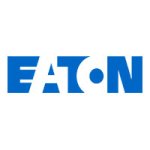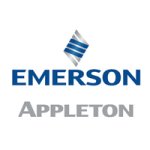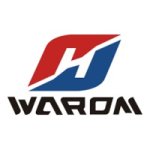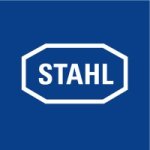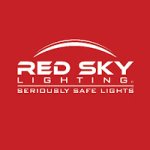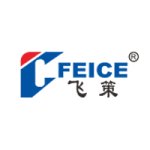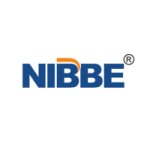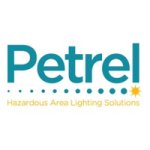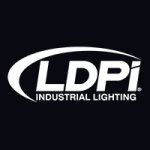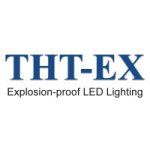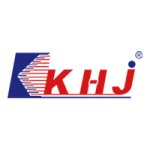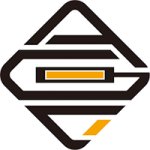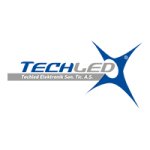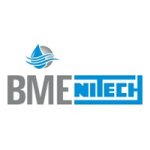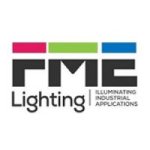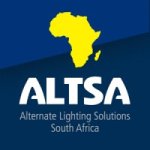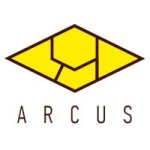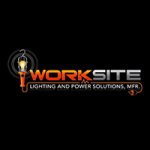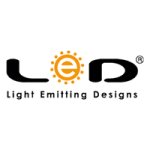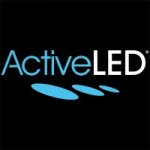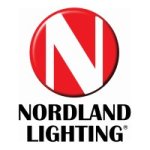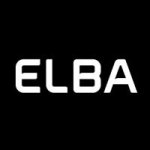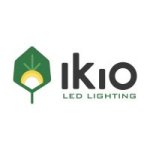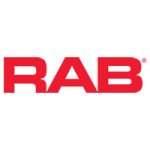Explosion-proof lights are
lighting fixtures specifically designed and constructed to prevent ignition of flammable gases, vapors, liquids, or dust in hazardous environments where there is a risk of explosion. These environments can include places like chemical plants, oil refineries, mines, and other industrial settings where such hazardous materials are present. These lights are specifically designed and constructed to prevent ignition sources, such as sparks or heat generated by the lighting fixture, from coming into contact with the surrounding hazardous materials. The design and construction of these lights include features such as sealed enclosures, robust housings made of materials like cast aluminum or stainless steel, and specialized seals and gaskets to contain any potential ignition sources within the fixture. By containing potential ignition sources within a sealed and robust enclosure, explosion-proof lights help maintain a safe environment in
hazardous locations. This helps minimize the risk of explosions and other accidents that could result in injury to personnel or damage to property. Their presence reinforces the importance of safety protocols and helps create a safer working environment for personnel.
Diverse applications
Explosion-proof lights find applications in various industries and environments where there is a risk of explosion due to the presence of flammable gases, vapors, liquids, or dust. Chemical plants often handle volatile and flammable materials, making them prone to explosions. Explosion-proof lights are used in chemical processing areas, storage facilities, and other areas where there is a risk of exposure to hazardous substances. Oil refineries, offshore platforms, and natural gas processing plants are environments with a high risk of explosions due to the presence of combustible gases and vapors. Explosion-proof lights are installed in various areas such as drilling platforms, pump stations, storage tanks, and processing units to provide illumination without posing a risk of ignition. Mines are another environment where explosion-proof lights are essential due to the presence of flammable gases and dust generated during mining activities. These lights are used in underground mines, tunnels, and surface mining operations to ensure safe illumination in potentially hazardous conditions. Manufacturing facilities, particularly those involved in industries such as pharmaceuticals, electronics, and food processing, may use explosion-proof lights in areas where flammable materials are present or where there is a risk of dust explosions. Power generation facilities, including coal-fired power plants and nuclear power plants, utilize explosion-proof lights in areas such as boiler rooms, turbine halls, and fuel storage areas where there is a risk of exposure to flammable substances or combustible dust. Warehouses storing flammable materials, chemicals, or hazardous goods require explosion-proof lighting to minimize the risk of ignition and ensure safe working conditions for personnel responsible for handling and storing these materials. Ships, offshore platforms, and marine vessels require explosion-proof lighting due to the presence of volatile fuels, gases, and chemicals onboard. These lights are used in various areas such as engine rooms, cargo holds, and offshore drilling rigs to provide illumination in potentially hazardous conditions.
Compliance with regulations
There are specific regulations, standards, and guidelines that dictate how explosion-proof lights should be designed, manufactured, and installed to ensure they are safe to use in environments where there is a risk of explosion. These codes typically come from regulatory bodies, industry organizations, or standards-setting organizations. They cover aspects such as the materials used, construction methods, electrical components, testing procedures, and installation requirements to minimize the risk of ignition and explosion in hazardous environments where flammable gases, vapors, liquids, or combustible dust may be present. By adhering to these codes, manufacturers ensure that their explosion-proof lights meet the necessary safety standards and can be reliably used in environments where explosive atmospheres are a concern, such as oil refineries, chemical plants, mines, and other industrial settings. Compliance with these codes helps protect both workers and property from the potential dangers associated with explosions. Explosion-proof lighting fixtures must undergo rigorous testing by accredited testing laboratories to ensure they meet the required safety standards. These tests typically involve subjecting the fixtures to various conditions, such as extreme temperatures, mechanical stress, and exposure to flammable substances, to evaluate their ability to prevent ignition sources from causing explosions. Once a fixture passes these tests, it receives certification indicating compliance with the relevant regulations and standards.
ATEX/IECEx zone system
ATEX and IECEx classifications are standards related to hazardous location lighting, particularly in environments where the presence of flammable gases, vapors, liquids, combustible dust, or ignitable fibers poses a risk of explosion. ATEX stands for "Atmosphères Explosibles," which is the French abbreviation for Explosive Atmospheres. It refers to a set of European Union directives that regulate equipment intended for use in potentially explosive atmospheres. ATEX directives define specific requirements and standards for the design, construction, testing, and certification of equipment, including lighting fixtures, for use in hazardous locations. ATEX classification ensures that equipment is safe and suitable for use in environments where the risk of explosion is present. IECEx stands for "International Electrotechnical Commission System for Certification to Standards Relating to Equipment for Use in Explosive Atmospheres." It is an international certification scheme developed by the International Electrotechnical Commission (IEC) to facilitate the global acceptance of equipment used in hazardous locations. The IECEx system provides a framework for the certification of equipment, including lighting fixtures, for use in explosive atmospheres based on international standards and best practices. Both ATEX and IECEx classifications provide a system for categorizing hazardous location lighting fixtures based on factors such as the type of hazardous substance present, the likelihood of exposure, and the level of protection required.
Different types of hazardous substances, such as flammable gases, vapors, combustible dust, or ignitable fibers, present unique risks and require specific precautions. ATEX and IECEx classifications consider the nature of the hazardous substance present in the environment where the lighting fixture will be used. For example, lighting fixtures designed for areas with flammable gases may have different requirements than those intended for areas with combustible dust. The likelihood of exposure to hazardous substances varies depending on factors such as the frequency of operations, the duration of exposure, and the activities conducted in the area. ATEX and IECEx classifications take into account the likelihood of exposure to hazardous substances when categorizing lighting fixtures. Areas with frequent or prolonged exposure to hazardous substances may require lighting fixtures with higher levels of protection. Hazardous location lighting fixtures must provide adequate protection against potential sources of ignition to prevent explosions. ATEX and IECEx classifications consider the level of protection required based on the specific hazards present in the environment. This may include requirements for explosion-proof enclosures, ingress protection ratings, temperature ratings, and resistance to corrosion or mechanical impact.
NEC Class/Division
The National Electrical Code (NEC) defines hazardous classified areas as locations where the presence of flammable gases, vapors, liquids, combustible dust, or fibers creates a potential risk of fire or explosion. These areas are categorized based on the type and likelihood of the hazardous materials being present. The NEC provides specific criteria for classifying hazardous locations into different classes, divisions, and groups, which help to standardize safety measures and equipment requirements. Hazardous locations are classified into three classes based on the type of hazardous materials present. Class I locations are areas where flammable gases or vapors may be present, such as petroleum refineries, chemical plants, or fuel storage facilities. Class II locations are areas where combustible dust is present, such as flour mills, grain elevators, or pharmaceutical manufacturing plants. Class III locations are areas where ignitable fibers or flyings are present, such as textile mills or woodworking facilities. Hazardous locations are further divided into two divisions based on the likelihood of the hazardous materials being present and the potential for ignition. Division 1 locations are areas where hazardous materials are likely to be present under normal operating conditions, or where they may be present frequently or for extended periods. Division 2 locations are areas where hazardous materials are not likely to be present in ignitable concentrations under normal operating conditions, or where they are present only intermittently, in abnormal conditions, or in small quantities. Hazardous locations are categorized into specific groups based on the properties of the hazardous materials present in those locations. Hazardous locations in Class I are categorized into four groups based on the types of flammable materials present. Group A encompasses atmospheres containing acetylene, a highly flammable gas commonly used in welding and cutting operations. Group B includes atmospheres containing flammable gases like hydrogen or butane. Group C comprises atmospheres containing flammable gases such as ethylene or propane. Group D includes atmospheres containing a wide range of flammable gases, vapors, or liquids, such as gasoline, methane, or ethanol. In Class II hazardous locations, the NEC categorizes these areas into three groups based on the types of combustible dusts present. Group E encompasses atmospheres containing combustible metal dusts, such as those produced by processes involving aluminum or magnesium. Group F includes atmospheres containing combustible carbonaceous dusts, such as coal or carbon black. Group G encompasses atmospheres containing combustible dusts not included in Group E or F, such as flour, grain, or wood dust.
LED technology serves as a foundational element in the development of explosion-proof lighting systems, providing essential safety features, durability, energy efficiency, and versatility necessary for reliable operation in challenging industrial environments. LED lights generate significantly less heat compared to traditional lighting sources such as incandescent or fluorescent bulbs. In hazardous environments where the presence of flammable gases or dust is a concern, minimizing heat emission reduces the risk of ignition, enhancing overall safety. LED lighting systems typically operate at low voltages, reducing the risk of electrical arcing or sparking compared to higher voltage lighting sources. This lower voltage operation further enhances safety by minimizing the potential for electrical hazards in explosion-proof environments. LED lights are solid-state lighting devices, meaning they lack fragile components like filaments or glass enclosures. This inherent durability makes LEDs more resistant to shocks, vibrations, and impacts, ensuring reliable operation in rugged industrial settings where explosion-proof lighting is necessary. ED lights have a much longer operational lifespan compared to traditional bulbs. Their extended lifespan translates to fewer replacements needed, reducing maintenance requirements and associated downtime in hazardous areas. LED technology is highly energy-efficient, converting a larger portion of electricity into light compared to conventional lighting sources. This efficiency not only reduces energy consumption and operating costs but also contributes to environmental sustainability by lowering carbon emissions. LED lights reach full brightness instantly when switched on, eliminating the need for warm-up time. This instantaneous start is crucial in emergency situations where immediate illumination is required to ensure safety and facilitate timely response to incidents. LED technology offers greater flexibility in design and customization of lighting solutions. From adjustable
color temperatures to dimming capabilities, LED lighting enables tailored lighting setups that meet the specific requirements of different hazardous environments, enhancing overall functionality and efficiency.
Design and construction
Designing explosion-proof LED lights involves a comprehensive approach to ensure safety in hazardous environments where the risk of explosion is present. Understanding the specific hazardous conditions of the environment where the LED lights will be used is crucial. This includes identifying the type of hazardous substances present (such as gases, vapors, or combustible dust) and their potential ignition sources. The primary focus of the design is the enclosure or housing of the LED light. It must be robust and able to contain any explosion that might occur within the fixture. The construction starts with selecting suitable materials for the housing or enclosure of the LED light. Common choices include aluminum or stainless steel, which are sturdy and can withstand high pressures and impacts.
LED modules and other electrical components used in the light must be intrinsically safe, meaning they are designed to prevent the generation of sparks or excessive heat that could ignite flammable substances. This involves selecting components with appropriate ratings and implementing protective measures to minimize the risk of ignition. LED lights generate heat during operation, so effective
heat dissipation is critical to prevent overheating, which could lead to a fire or explosion.
Heat sinks, thermal pads, and other cooling mechanisms are integrated into the design to maintain safe operating temperatures. Proper sealing of the enclosure is essential to prevent the entry of hazardous substances and the escape of any potential ignition sources. Seals and gaskets are employed at all openings and joints to maintain the integrity of the enclosure. Wiring, connectors, and other electrical components within the fixture are carefully selected and designed to minimize the risk of sparking or arcing. This may involve using explosion-proof enclosures or barriers to contain any potential electrical faults.
Flame path
In explosion-proof LED lights, the flame path refers to a specifically designed pathway within the fixture that controls the direction and propagation of flames in the event of an internal explosion. The purpose of the flame path is to contain the explosion within the enclosure of the LED light and prevent it from igniting the surrounding hazardous atmosphere. Within the enclosure, the design includes channels or pathways that direct the flames away from sensitive internal components and toward designated venting points. This controlled pathway ensures that the flames follow a predictable route, minimizing the risk of causing further damage or igniting external flammable substances. The flame path should be long enough to allow for effective cooling of the burning gases produced during an internal explosion. This length ensures that the gases have adequate time to dissipate heat as they travel along the flame path. Additionally, the flame path should include a controlled interstice, meaning there should be a carefully designed space or gap within the enclosure that allows the gases to flow smoothly along the designated pathway. This controlled interstice helps regulate the flow of gases and ensures that the flames follow a predictable route, minimizing the risk of further ignition or damage. Venting points are strategically placed along the flame path to allow the controlled release of pressure and gases generated by the explosion. These vents are designed to prevent the entry of external gases while safely dissipating the internal pressure. The flame path should ideally prevent the entry of external contaminants such as dust, debris, or fibers into the enclosure's interior. These contaminants could potentially ignite or exacerbate an explosion if they come into contact with the internal components or the burning gases. By excluding such contaminants from the enclosure, the flame path helps maintain a clean and controlled environment within the fixture, enhancing safety and reliability.
Explosion-proof LED lights
The types of explosion-proof LED lights encompass various fixtures designed for different applications and environments where the risk of explosion is present.
High bay lights are typically mounted at a high elevation, such as ceilings or rafters, and are used to provide broad, uniform illumination in large indoor spaces with high ceilings. In hazardous environments,
explosion-proof high bay LED lights are designed to withstand potential explosions caused by flammable gases or vapors. They offer efficient lighting solutions for areas such as warehouses, manufacturing facilities, and storage facilities.
Explosion-proof LED flood lights produce a wide beam of light, making them suitable for illuminating large outdoor areas or providing accent lighting. In hazardous locations, explosion-proof
LED flood lights are designed to withstand harsh environmental conditions and prevent the ignition of flammable substances. They are commonly used for
outdoor lighting applications in oil refineries, chemical plants, and offshore platforms.
Area lights are designed to provide widespread illumination across outdoor or indoor spaces. They are versatile fixtures suitable for various applications, including parking lots, pathways, and work areas. In hazardous environments, explosion-proof
LED area lights are engineered to meet stringent safety standards and ensure reliable operation in potentially explosive atmospheres.
Portable LED work lights are designed to be portable and easy to move around, making them suitable for temporary lighting needs in hazardous areas. They often feature rugged construction, ergonomic handles, and versatile mounting options for flexibility in use.
Portable LED work lights are commonly used in maintenance, inspection, and repair tasks in industrial facilities. Emergency LED Lights are equipped with battery backup or
emergency lighting features to provide illumination during power outages or emergencies in hazardous environments. They are essential for maintaining visibility and safety in critical situations where reliable lighting is necessary.
